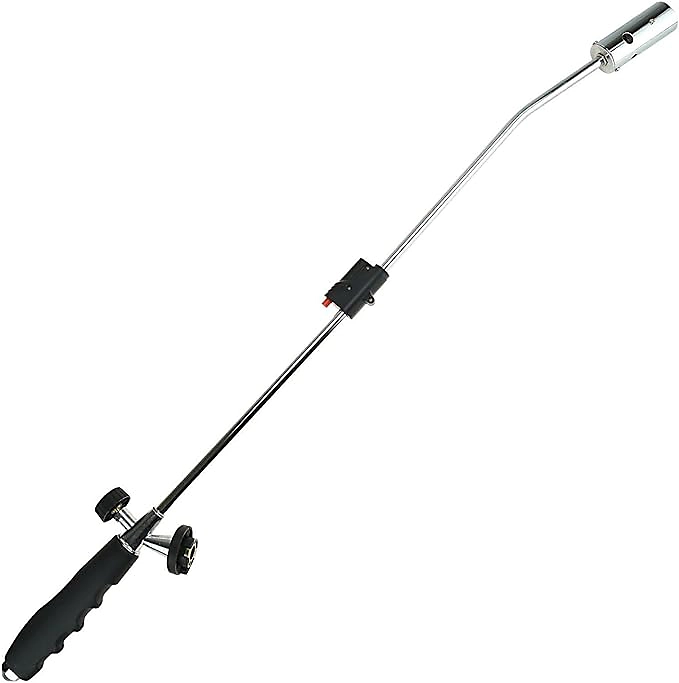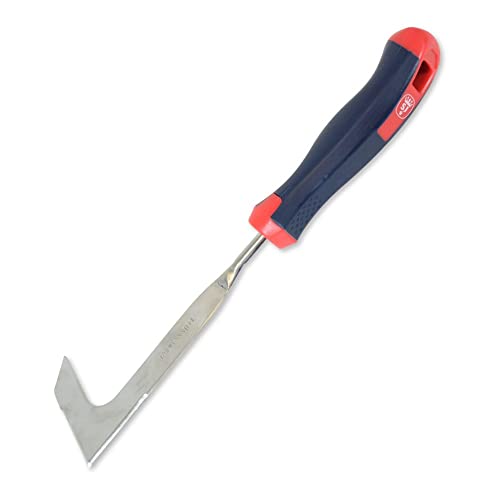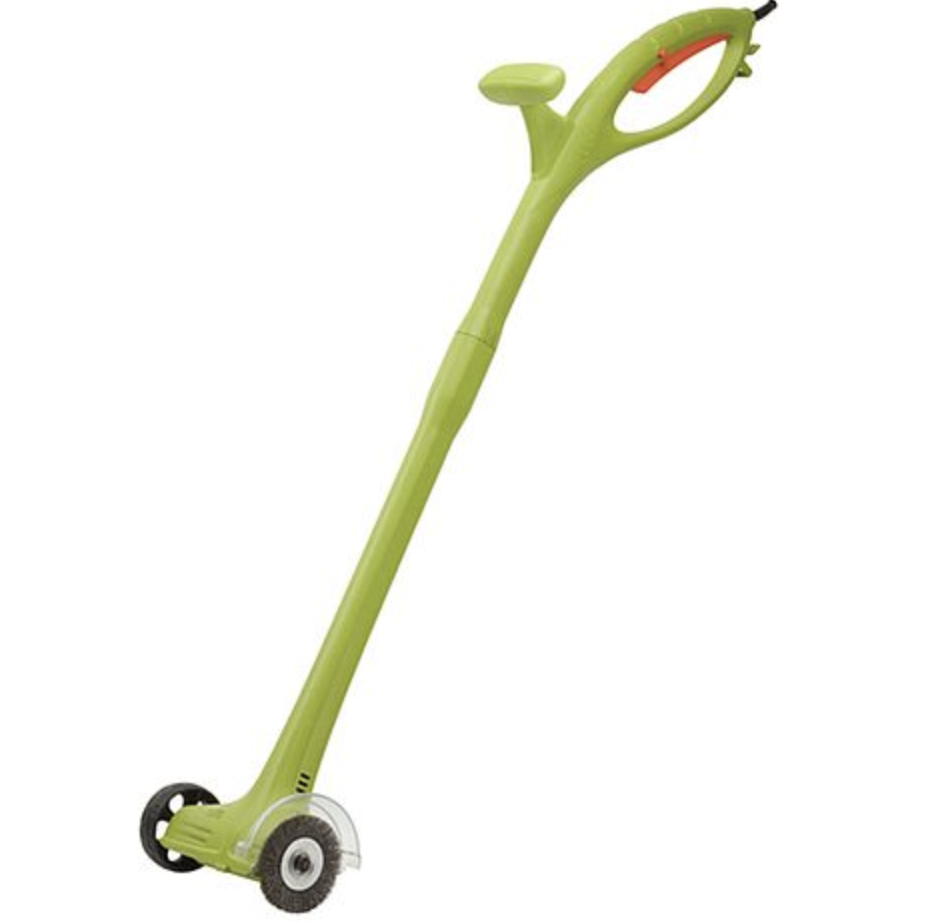How to stop weeds in block paving and prevent them from returning
Stop weeds from spoiling the look of your block paving or driveway with these 7 fail-safe methods from the experts
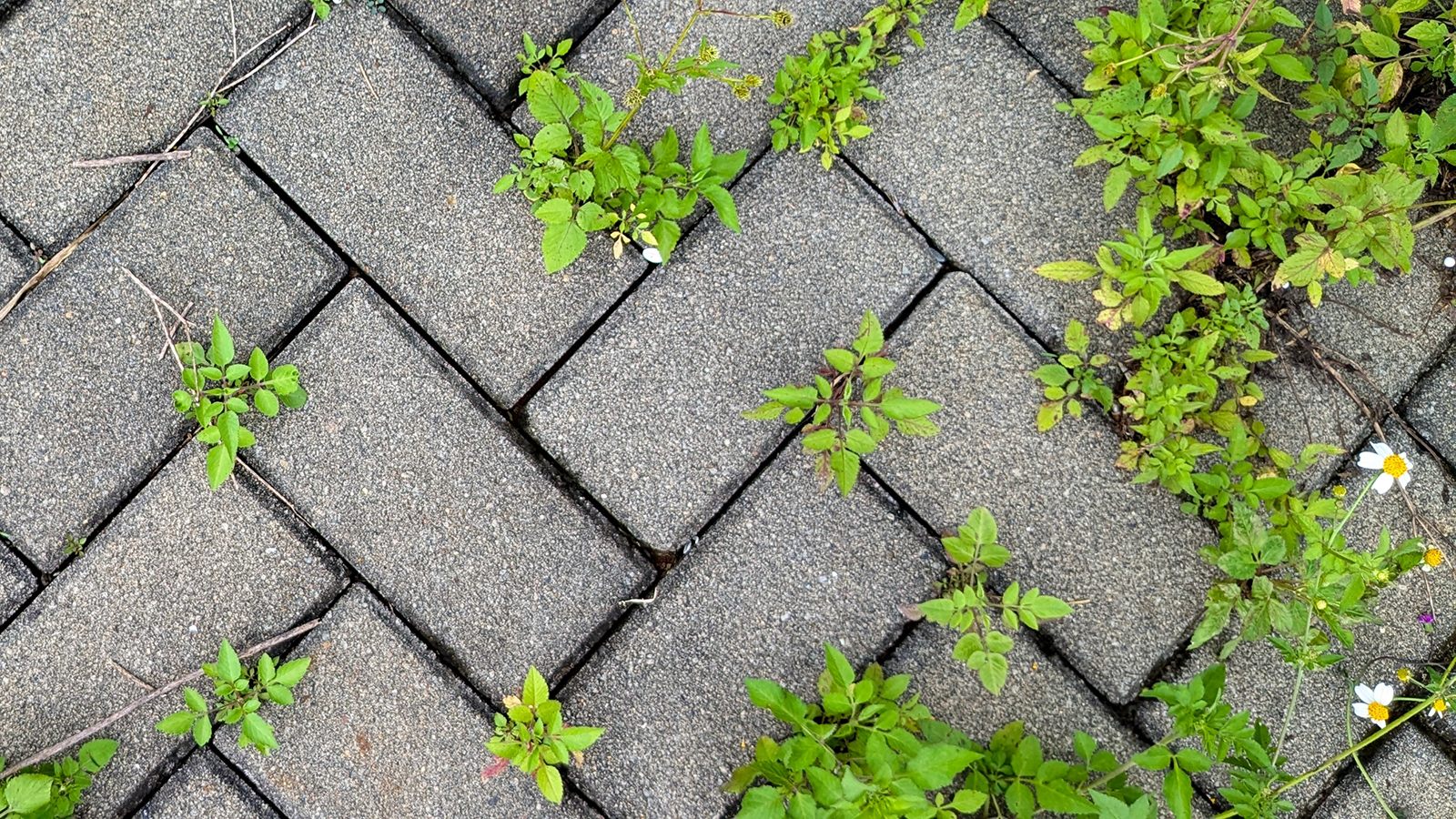
The warm weather brings an onslaught of growth in the garden, and that's not always a welcome arrival. For instance, when weeds begin to pop up in cracks in block paving. Patio slabs and weeds in gravel are similarly all too common.
With block paving being small in size, there are plenty of cracks where weeds can appear, and insufficient weed care the problem can quickly get out of hand and really take hold.
Some methods for how to stop weeds in block paving are preventative and are factored in before installation, but it's possible to deal with this problem effectively even after your paving has been laid.
1. Put down preventative barriers before you start
The advice from landscaping expert Gary Jarman, Director of Building Shop, is to take measures to stop weeds before laying block paving or a patio. "If you haven't placed your paving yet, I recommend installing a weed control fabric underneath the paving," says Gary. Try the CORE DRIVE Woven Geotextile Membrane at Amazon.
"In every driveway project, whether block paving or gravel driveway, I recommend including this step. A minor addition, but it delivers significant long-term advantages. It's attention to detail that distinguishes a stellar job from an ordinary one," adds John Davis, owner and operational director at Springfield Steel Buildings.
A weed-proof membrane can also be applied before laying a lawn to prevent weeds in grass.

Gary has over 40 years of experience in supplying building materials to both the trade and public alike, Gary's background and extensive knowledge of building and supplies covers everything from decorating and landscaping to drainage and roofing.

2. Add sand to the cracks of your paving
Filling the gaps in your block garden paving with sand helps to create an environment which makes it more difficult for weeds to germinate and take root. It creates a barrier between the soil and weed seeds.
Water can accumulate between slabs, creating a perfect environment for weeds to grow. Sand helps aid drainage and prevent pools of moisture from forming in cracks.
It's not just any sand that should be used, however. “Filling block paving gaps with builders' sand is not the best solution as weeds can still grow through. An effective way to help prevent the growth of weeds is using weed-resistant paving jointing sand, specifically developed for block paving," explains Paul Kershaw at Tradefix Direct.
Try Dansand NO GROW Block Paving Sand at Wickes, available with next-day delivery.

Shop weeding tools
3. Apply a sealant to your block paving
If you've laid your paving or driveway material you could add a sealant for even weed suppression, which will need to be applied every few years.
“To prevent any future weed growth, it’s a wise idea to seal your block paving with a breathable paving sealer like the Nexus Pro 810 Paving Sealer 5 Litre at Tradefix, which prevents any seeds from getting trapped and sprouting up between the paving blocks. Be sure to remove any present weeds and sweep and clean the area before applying it, says Paul Kershaw.

Paul Kershaw has over 35 years of experience in the building supplies trade. He focuses on the buying aspect, utilising his strong general knowledge of the industry. He is also known for providing excellent advice to customers, drawing from his extensive experience.
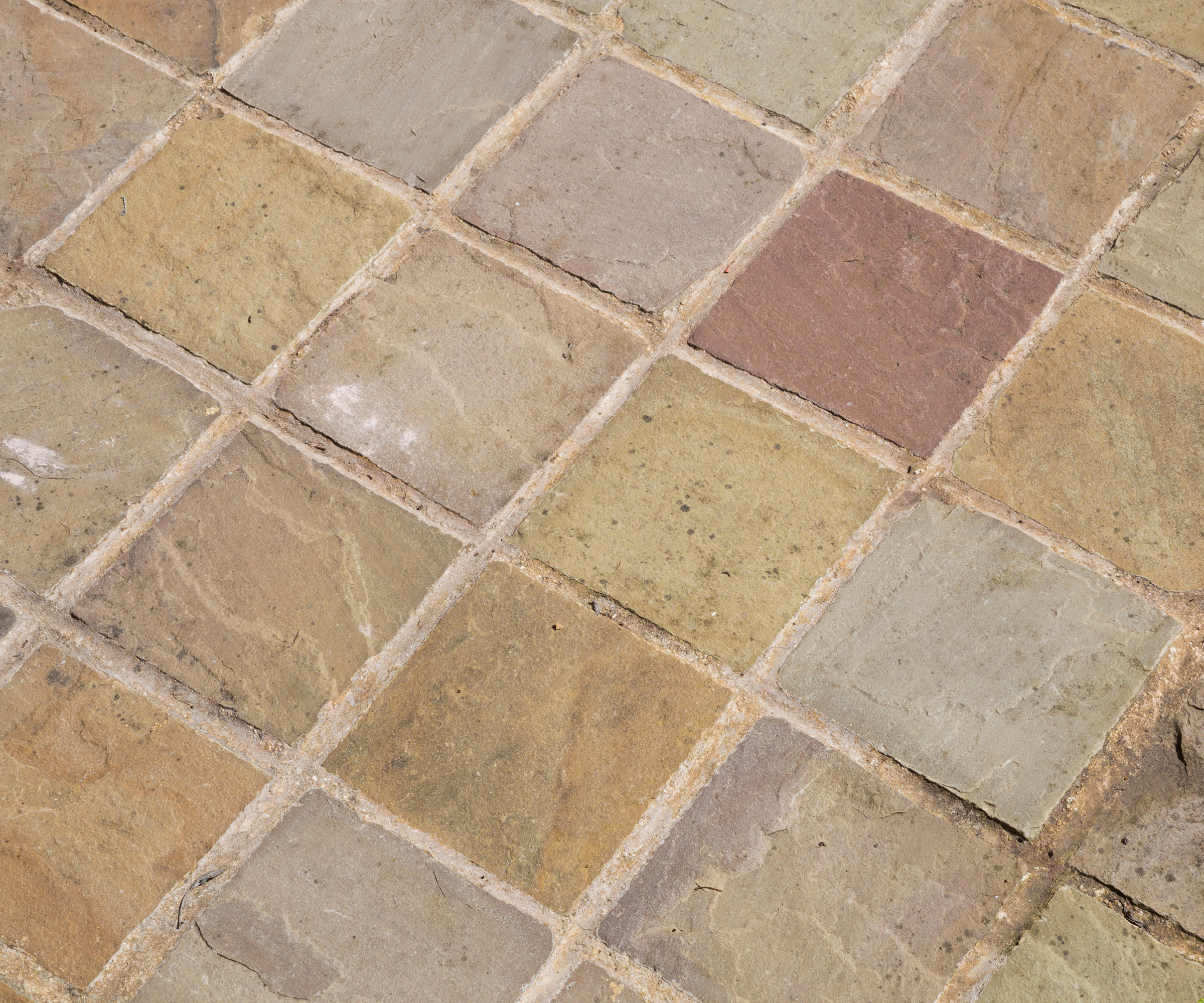
4. Remove weeds by hand as they appear
If you just have a few weeds here and there in your garden paving, you may be able to get rid of all of the weeds by hand. "Removing the root is the most important thing to remember when pulling up weeds by hand," advises Fiona Jenkins, gardening expert at MyJobQuote.
"If you are pulling up nettles, always wear gloves. If you struggle to pull the roots up with just your hands, consider investing in a weed-pulling tool," says Fiona.
Depending on the scale of your driveway design, you could use a weed blow torch, like this Draper 3 in 1 Weed Burner at Rober Dyas, which can cover a large area more quickly than a manual tool. Long weeding knives and hooks will be effective at reaching right down to the root.

A landscaper and gardening expert with over 25 years of experience in the industry. She is well-placed to comment on weed control in all areas of the garden.
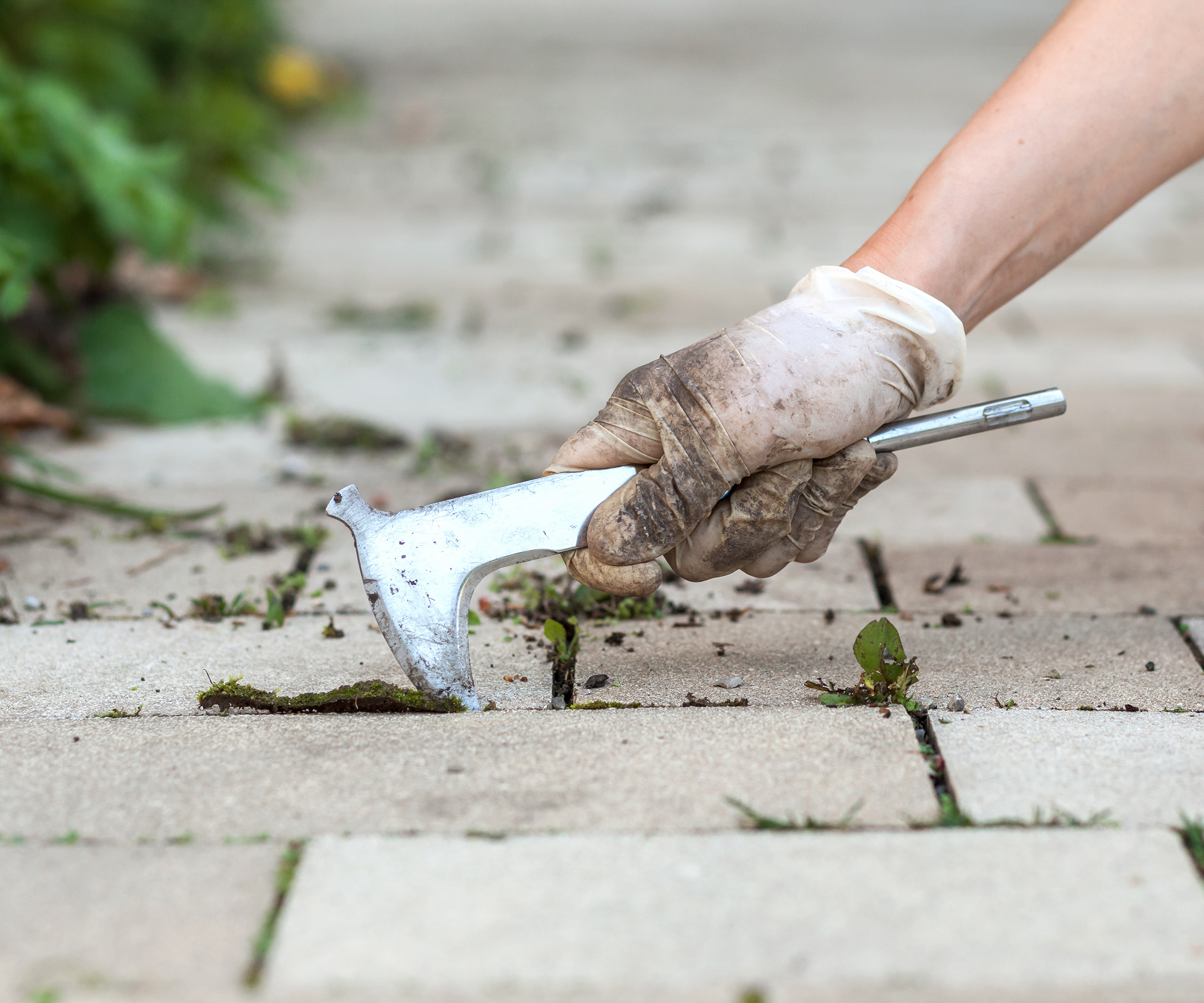
5. Pour boiling water down the cracks
For a more natural and safe alternative to chemical weed killer, Gary Jarman advises that you try pouring boiling water onto the weeds. "This will likely kill all of the surface plants, however if your weeds have deep roots, it will likely need more applications," explains Gary.
Fiona Jenkins agrees that boiling water is a great way to help kill weeds naturally. "However, you’ll want to avoid getting the boiling water on the surrounding areas of grass or plants as it could cause some damage," she warns.
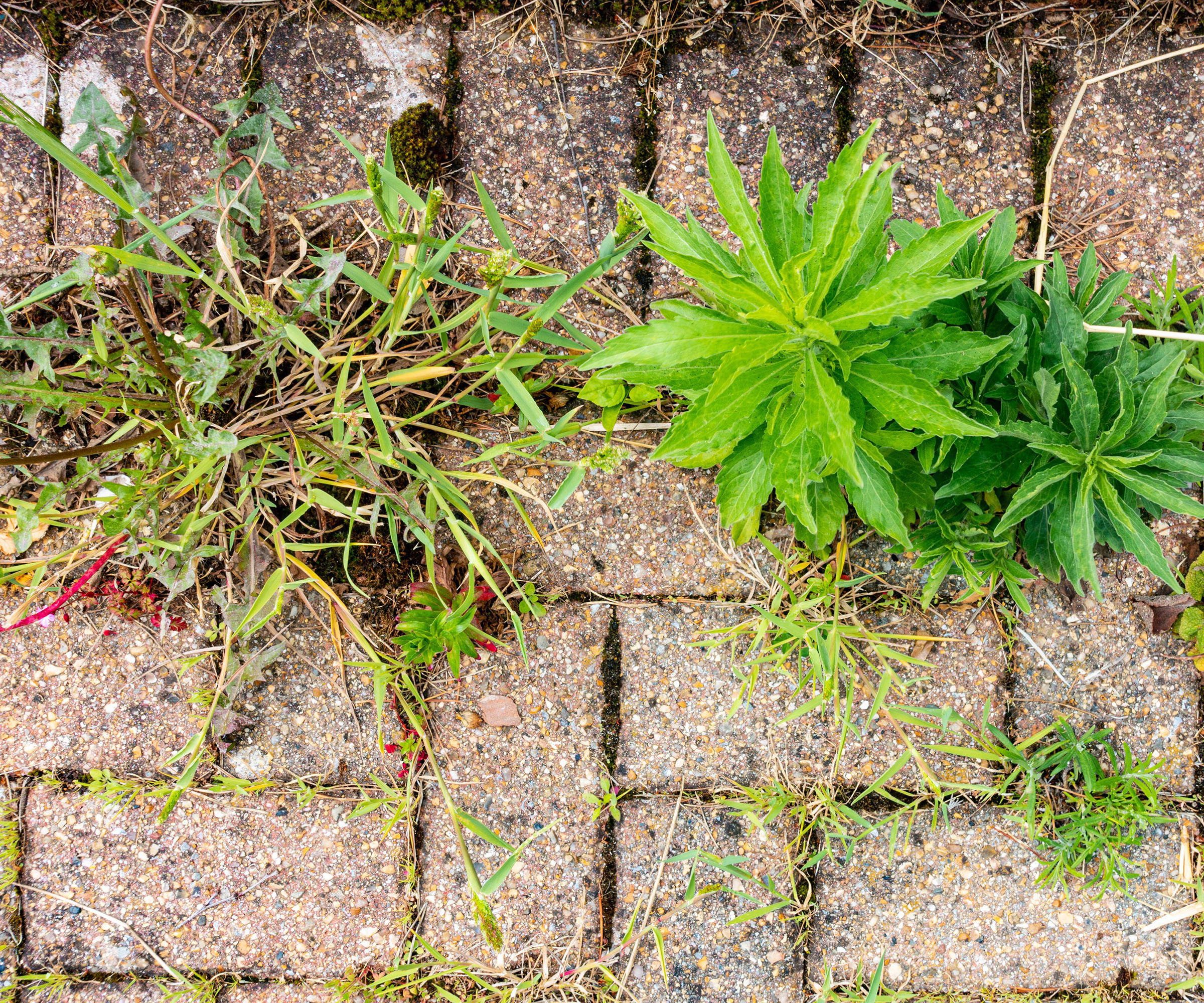
6. Use a homemade natural weedkiller
There are natural solutions to stopping weeds in paving cracks. "Salt can be quite effective at killing weeds in gravel and block paving. Sprinkle some salt liberally over the weed and leave it there. This should kill off the weed within a few days," says Fiona Jenkins.
"Salt is also great for deterring insects and getting rid of slugs. Be careful not to sprinkle the salt on the surrounding lawn or plants as this could kill off some of the grass or plants."
Lemons are another natural, waste-free solution. "Simply cut a lemon in half and then squeeze the juice over the weed. The citric acid in the lemon should kill the weed within a few days," says Fiona.
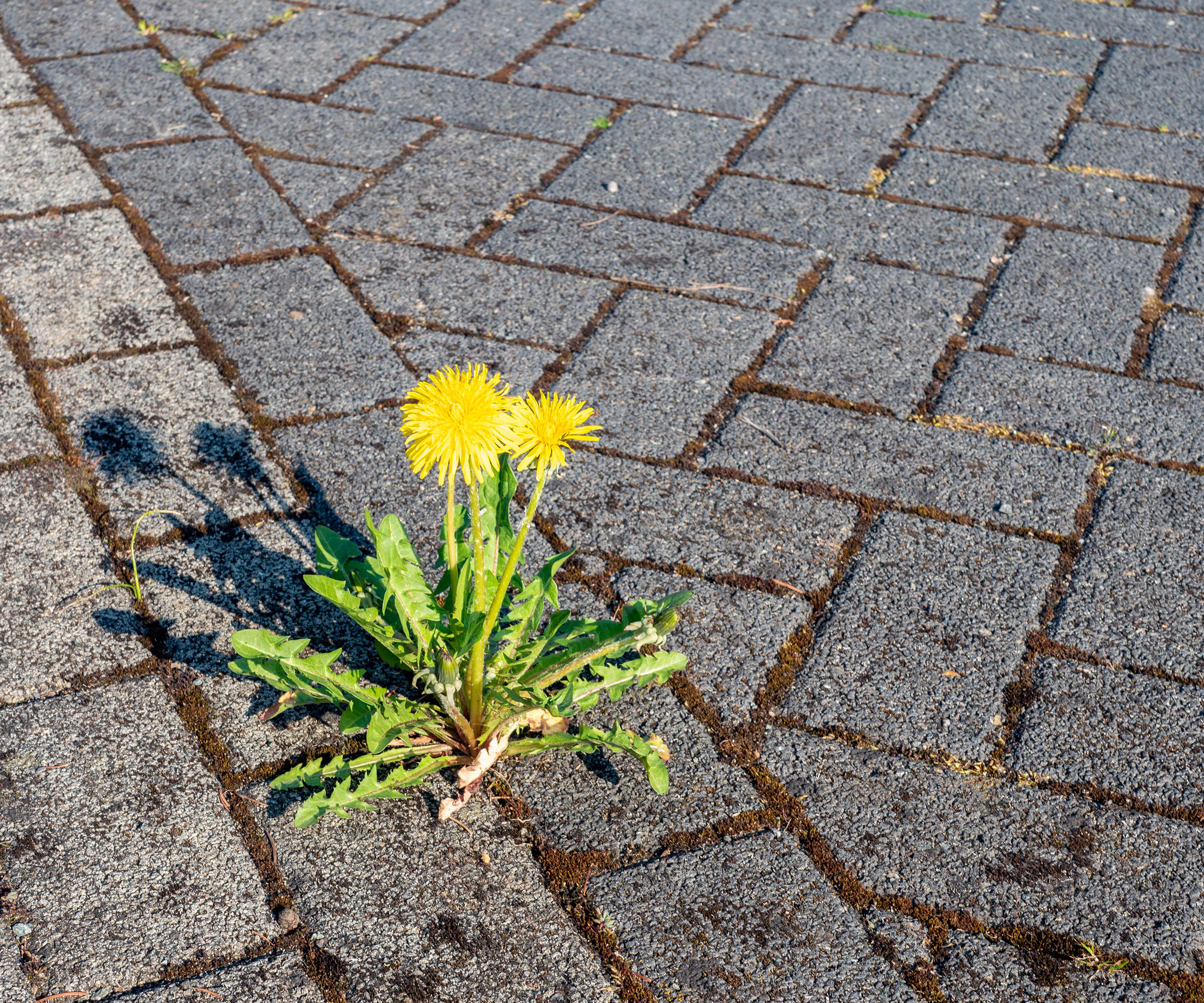
7. Use chemical weedkillers as a last resort
As a last resort, on particularly troublesome weed infestations, you could try a chemical weedkiller. Always bear in mind that these can be toxic as well as have a negative environmental impact.
If you do resort to a weedkiller, then try and opt for an eco-friendly product. "There are now many eco-friendly weed killers available to buy. These solutions usually come in a spray bottle. Simply spray the solution directly onto the weed and leave it to do its thing. These eco-friendly weed killers will usually kill off the weeds within a few days," says Fiona Jenkins.
Try KinderPet Eco Weed Killer Organic Chemical Free WeedKiller at Amazon.
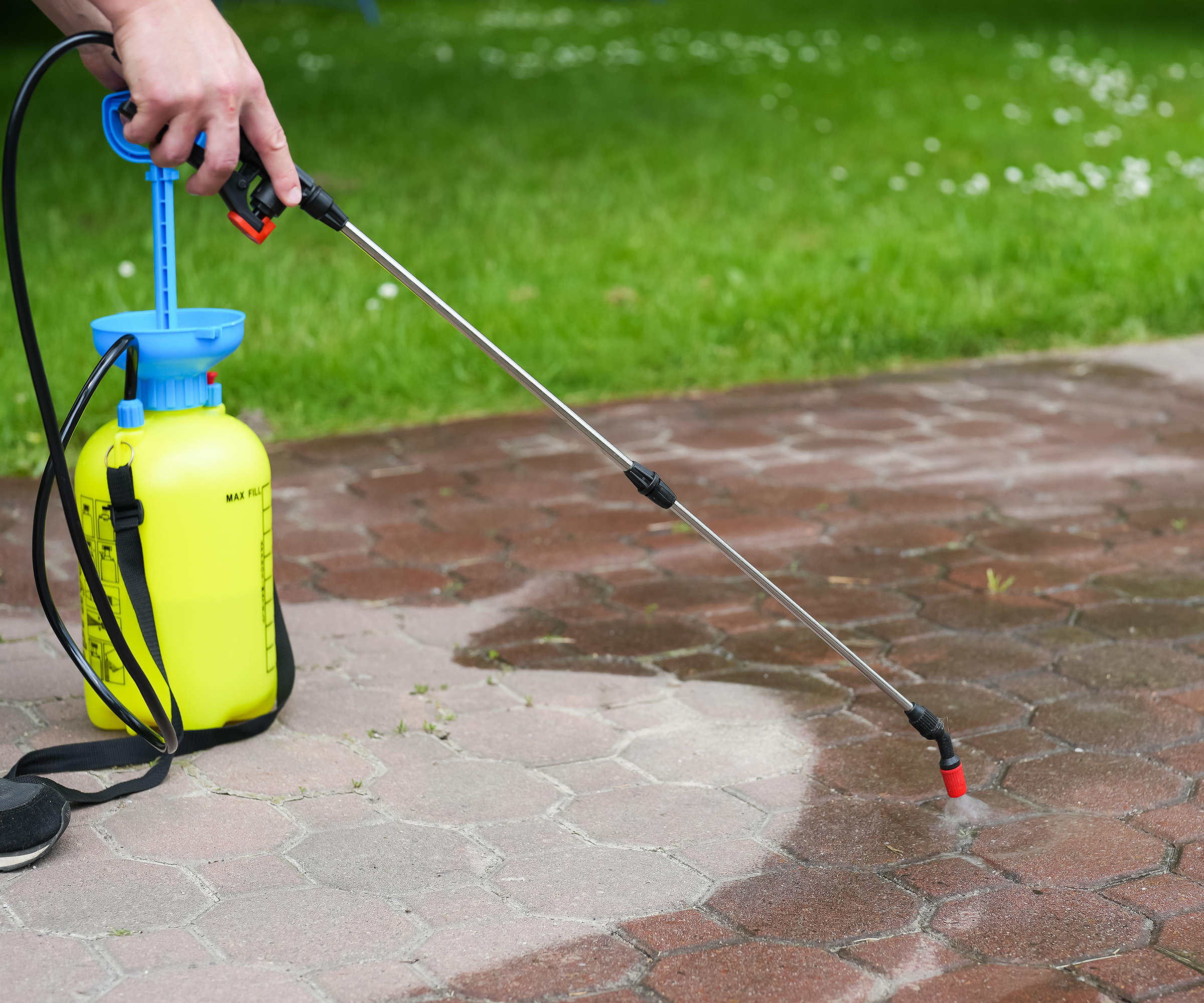
FAQs
Does sand between block paving stop weeds?
Gary Jarman landscaping expert and director of Building Shop says: "Yes, very specific kiln-dried sand placed between block paving will work to help prevent any weed growth. When it's properly filled between the paving slabs, it acts as a barrier which makes it difficult for weeds to take root and grow."
"However it's important to note that the sand can be easily moved around by weather, being walked on and other types of movement, which will in turn allow the weeds to grow. That's why it's important to keep the sand well topped up, and reapply sealant to keep it well maintained and strong," says Gary.
Does salt kill weeds on block paving?
"Weeds die from salt because it draws water from them. Sodium chloride is a natural, cost-effective weed killer. Salt pulls moisture out of plant cells, causing dehydration and plant death," says garden expert Jane Dobbs.
Use with caution as salt can also damage surrounding plants and lawns and negatively impact soil health.
"You will need a mix of one part salt, three parts water. Whenever there's no rain expected, apply salt directly to the leaves or base of weeds using a spray bottle. After a couple of days, check the treated area. It's okay to add salt every day until it kills the plant," advises Jane.

Responsible for leading the gardening team at Allan's Gardeners, a landscaping and garden maintenance, business who do patio and driveway maintenance and installation.
If your block paving is beyond salvaging you might be interested in our guide: how much does a new patio cost?
Bring your dream home to life with expert advice, how to guides and design inspiration. Sign up for our newsletter and get two free tickets to a Homebuilding & Renovating Show near you.

Teresa was part of a team that launched Easy Gardens in 2018 and worked as the Editor on this magazine. She has extensive experience writing and editing content on gardens and landscaping on brands such as Homes & Gardens, Country Homes & Interiors and Living Etc magazine. She has developed close working relationships with top landscape architects and leading industry experts, and has been exposed to an array of rich content and expertise.
In 2020 Teresa bought her first home. She and her partner worked alongside architects and builders to transform the downstairs area of her two bedroom Victorian house in north London into a usable space for her family. Along the way she learned the stresses, woes and joys of home renovation, and is now looking to her next project, landscaping the back garden.
